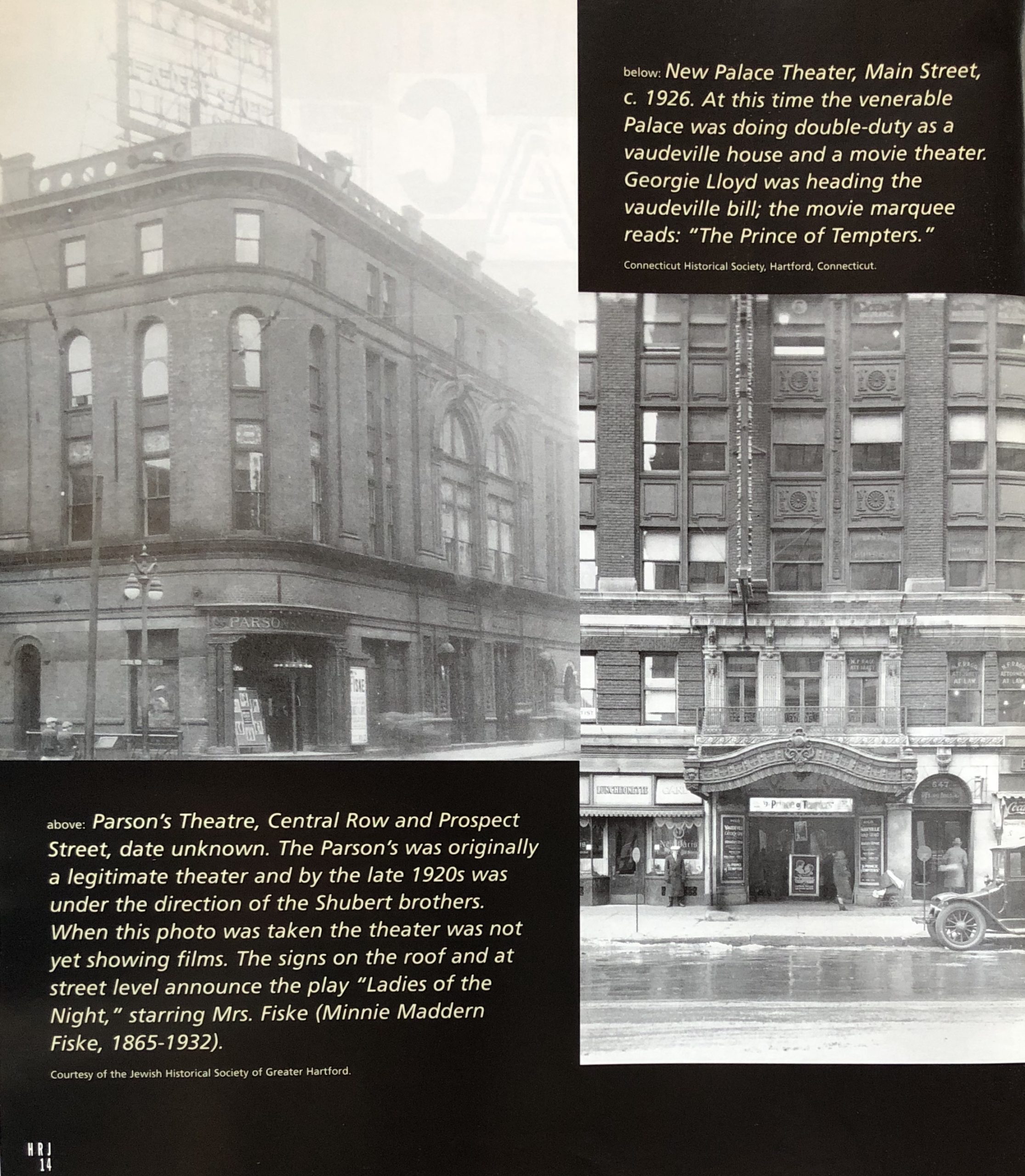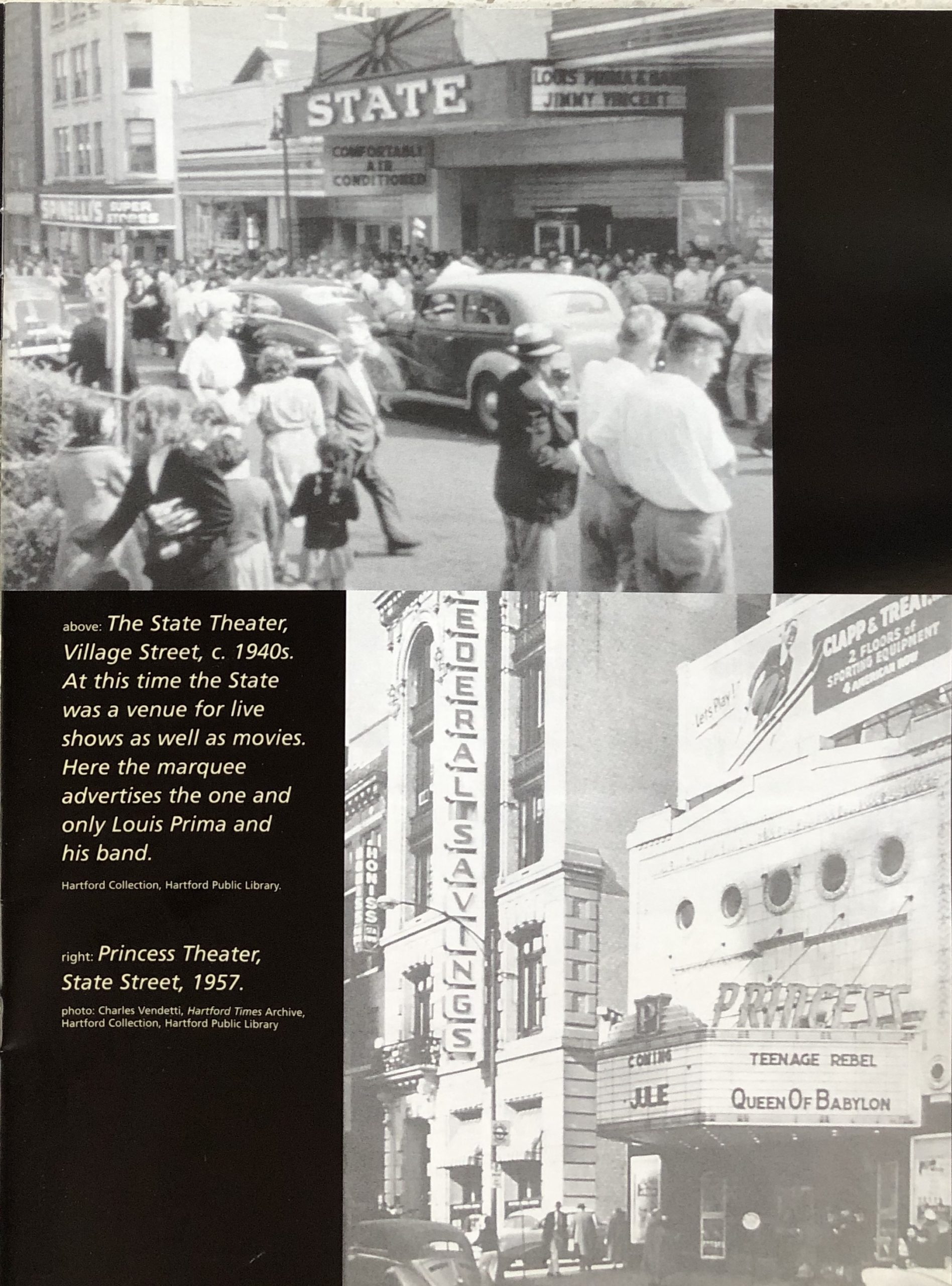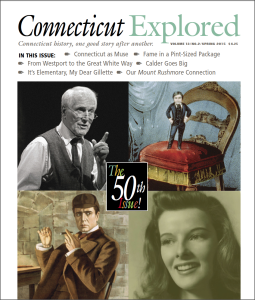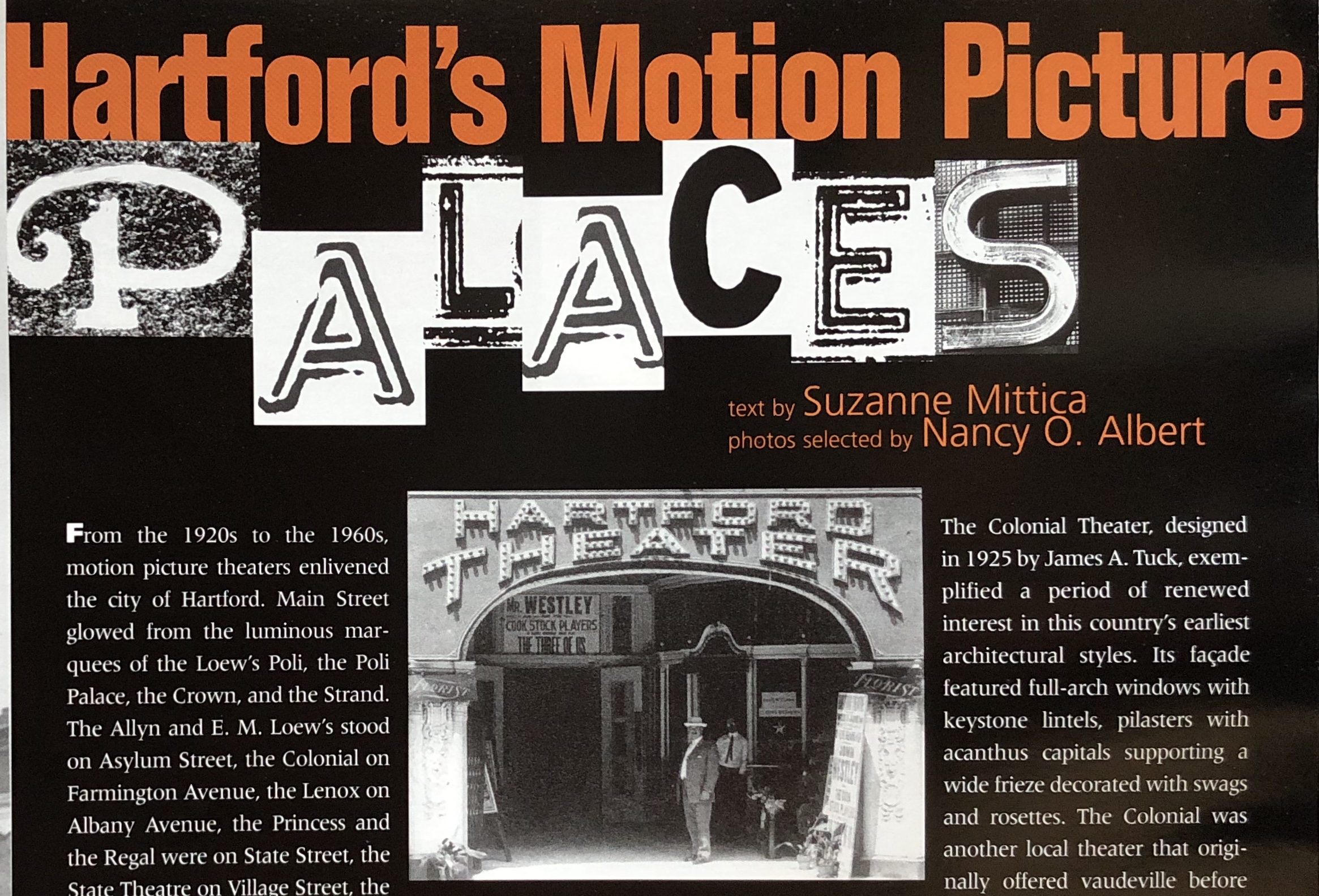
The Hartford Theater, the Wise Smith Building, Main Street, 1914. Originally the Hartford Opera House where Yiddish plays were performed, the Hartford Theater was also a stage theater prior to and during the silent film era. Jewish Historical Society of Greater Hartford
Text by Suzanne Mittica
Photos selected by Nancy O. Albert SPRING 2003
Subscribe/Buy the Issue
From the 1920s to the 1960s, motion picture theaters enlivened the city of Hartford. Main Street glowed from the luminous marquees of the Loew’s Poli, the Poli Palace, the Crown, and the Strand. The Allyn and E. M. Loew’s stood on Asylum Street, the Colonial on Farmington Avenue, the Lenox on Albany Avenue, the Princess and the Regal were on State Street, the State Theatre on Village Street, the Webster on Webster Street, and others. In addition to the double features these theaters screened cartoons and newsreels, and some included Wurlitzer music.
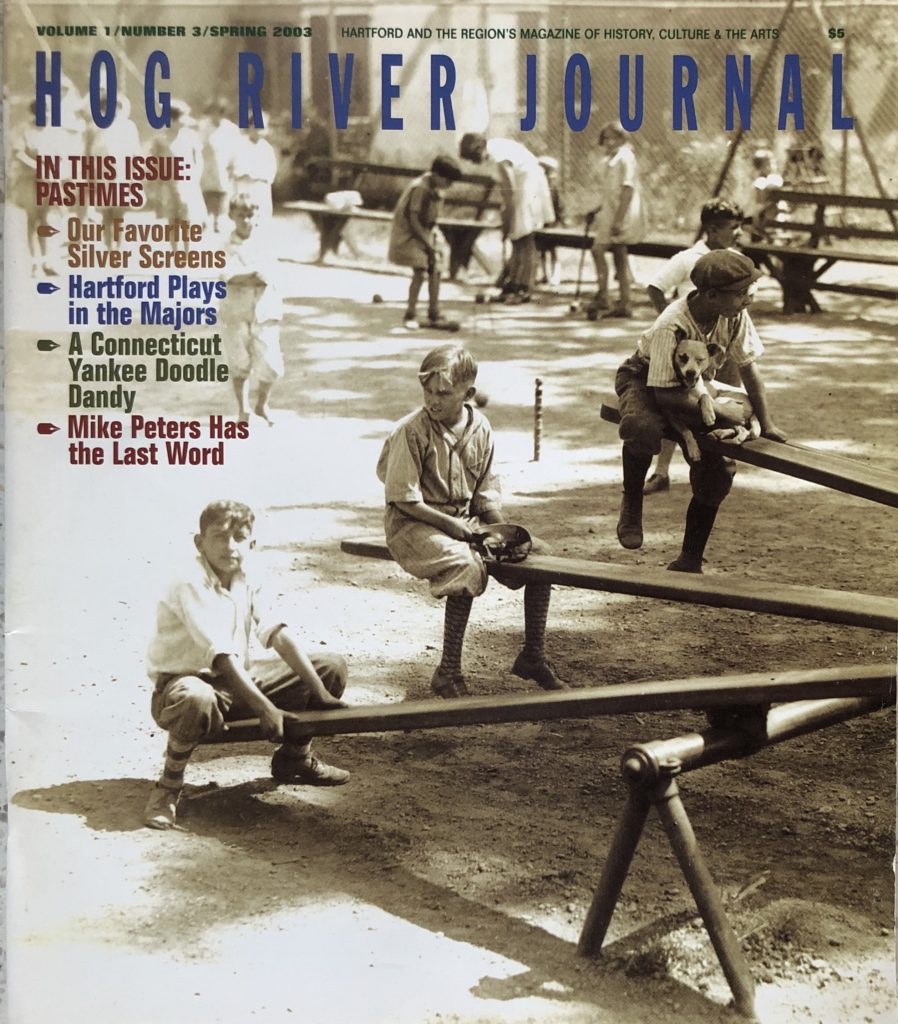 Hartford’s motion picture theaters were magnificent. Their designs reflected architectural trends of the day. For example the Poli (which later became the Fox Poli and still later renamed Loew’s Poli), designed by Thomas W. Lamb in 1920, exhibited the influence of the Ecole des Beaux-Arts. Its lavish façade featured gigantic fluted columns with Ionic capitals. Gracing the top of the vertical marquee were sculpted allegorical figures of horn players summoning all to enter. In its early days the theater presented acts such as the Great Houdini before becoming a first-run motion picture house affiliated with MGM. In 1964, it was demolished to make way for the Bushnell Towers.
Hartford’s motion picture theaters were magnificent. Their designs reflected architectural trends of the day. For example the Poli (which later became the Fox Poli and still later renamed Loew’s Poli), designed by Thomas W. Lamb in 1920, exhibited the influence of the Ecole des Beaux-Arts. Its lavish façade featured gigantic fluted columns with Ionic capitals. Gracing the top of the vertical marquee were sculpted allegorical figures of horn players summoning all to enter. In its early days the theater presented acts such as the Great Houdini before becoming a first-run motion picture house affiliated with MGM. In 1964, it was demolished to make way for the Bushnell Towers.
The Colonial Theater, designed in 1925 by James A. Tuck, exemplified a period of renewed interest in this country’s earliest architectural styles. Its façade featured full-arch windows with keystone lintels, pilasters with acanthus capitals supporting a wide frieze decorated with swags and rosettes. The Colonial was another local theater that originally offered vaudeville before making the transition to motion pictures. It later retooled for Cinerama.
Then there’s the Webster Theater. Designed by George Zunner, Jr. and Paula Shulman in 1937, the Webster illustrates how the streamlining of automobiles and airplanes entered the architectural world as Art Moderne. Its sleek curved façade, composed primarily of glass blocks, features a stainless steel marquee that stretches the entire length and supports a neon “WEBSTER” sign. Also contributing to the Webster’s horizontal effect are ribbon windows with metal casement (analogous to those on the Hartford Public Library) appearing on side elevations. The Webster withstood urban renewal, but not the economics of film distribution. It now offers live music. Its proscenium includes a stage where musicians perform. In back, however, the screen remains.
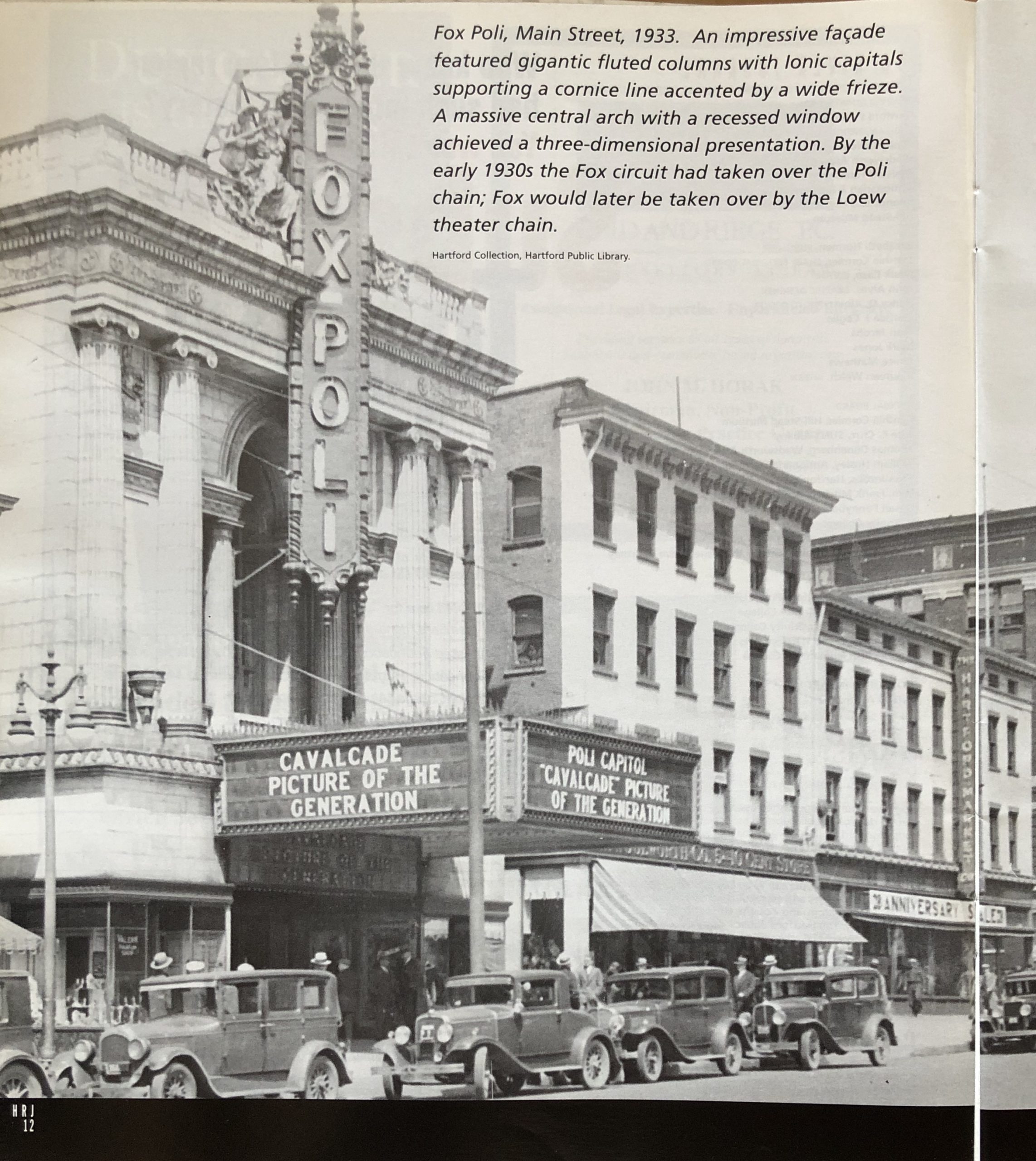
Fox Poli, Main Street, 1933. An impressive facade. By the early 1930s the Fox circuit had taken over the Poli chain; /fox would later be taken over by the Loew theater chain. Hartford Collection, Hartford Public Library
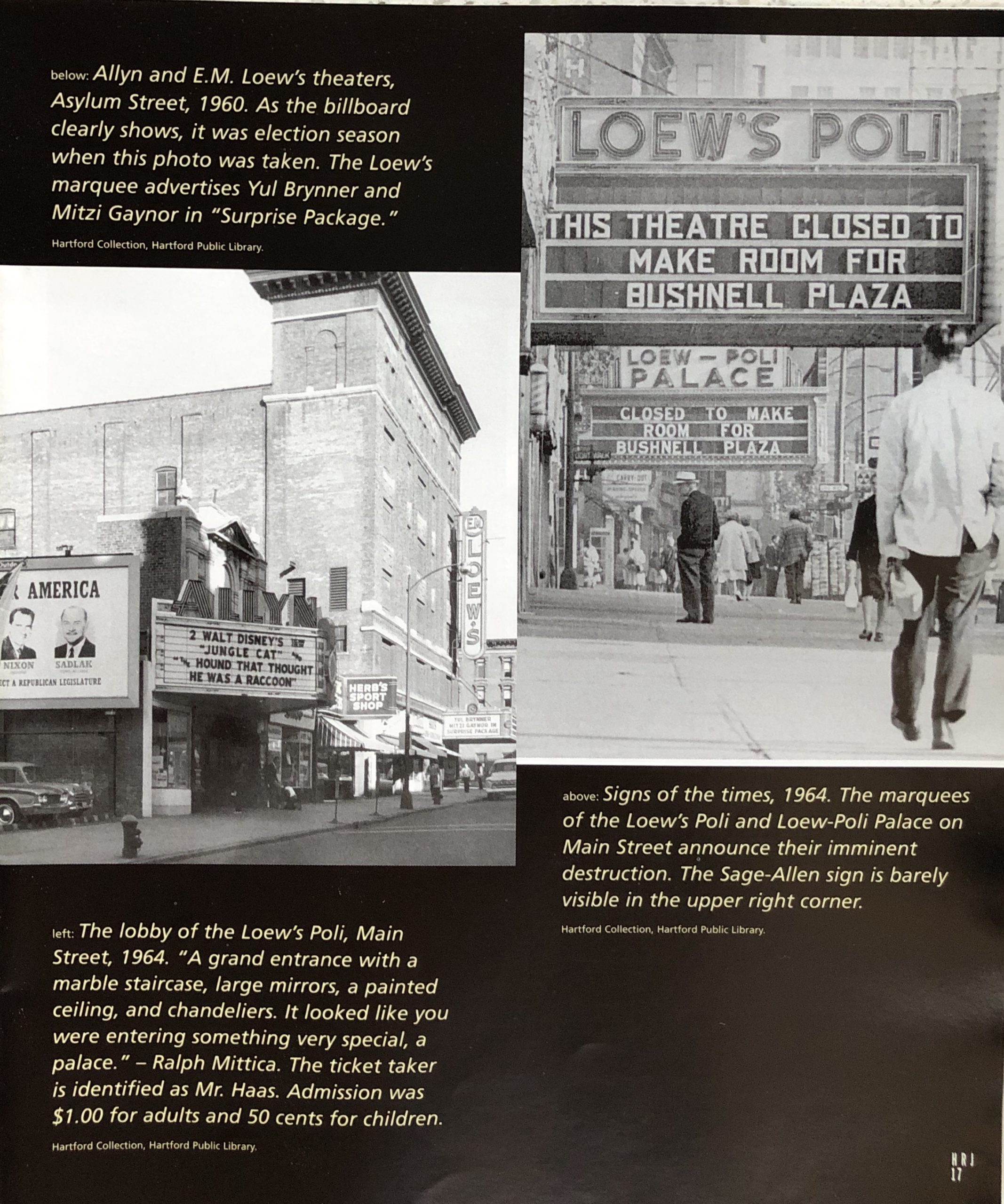
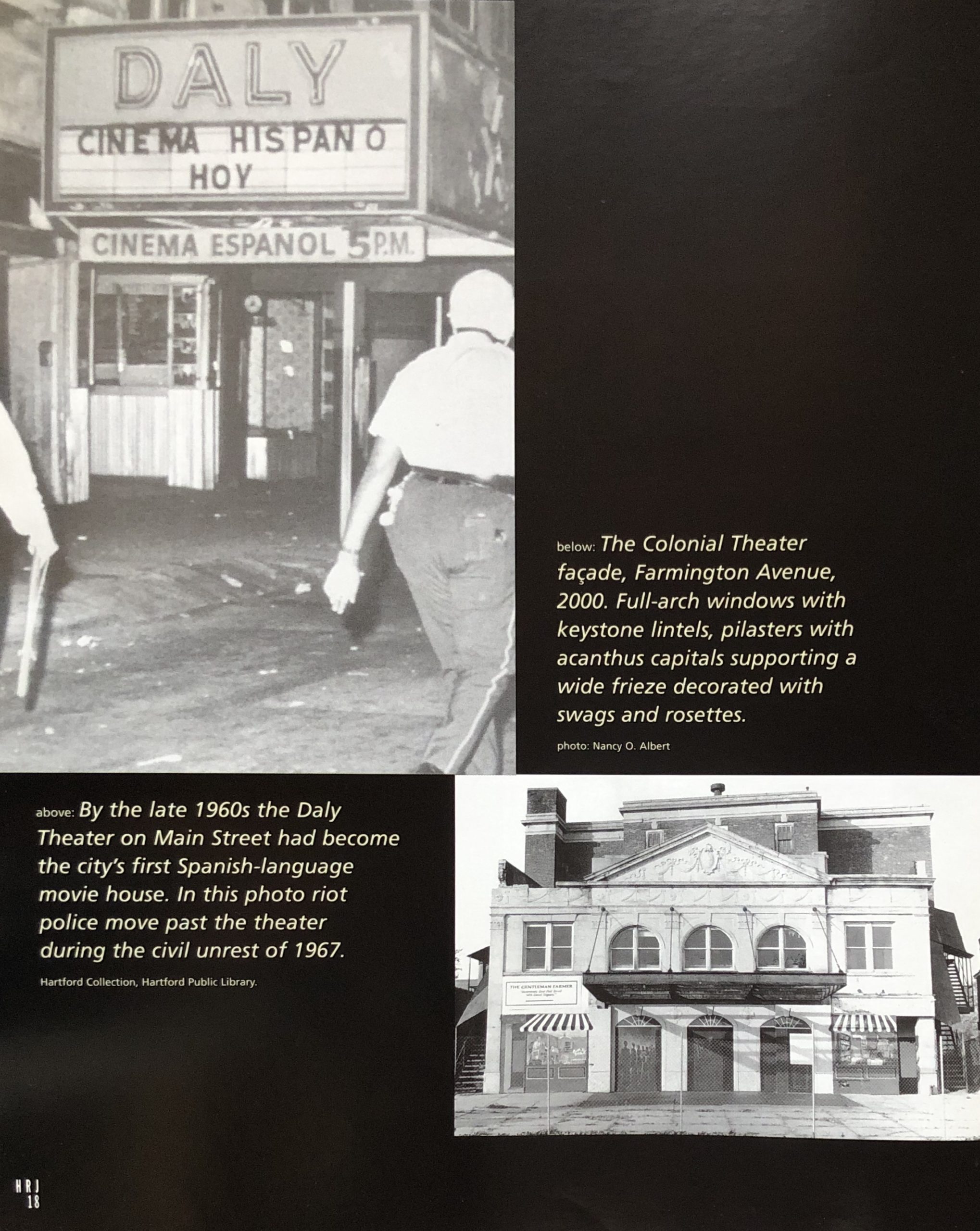
 Suzanne Mittica is working toward a master’s degree in American Studies at Trinity College. She is employed by the Hartford Technology Services Company.
Suzanne Mittica is working toward a master’s degree in American Studies at Trinity College. She is employed by the Hartford Technology Services Company.
Explore!
“The Warner and Palace Theaters,” Winter 2005/2006
Connecticut Celebrities, Spring 2015
Read more stories about Connecticut’s Art History on our TOPICS page.

